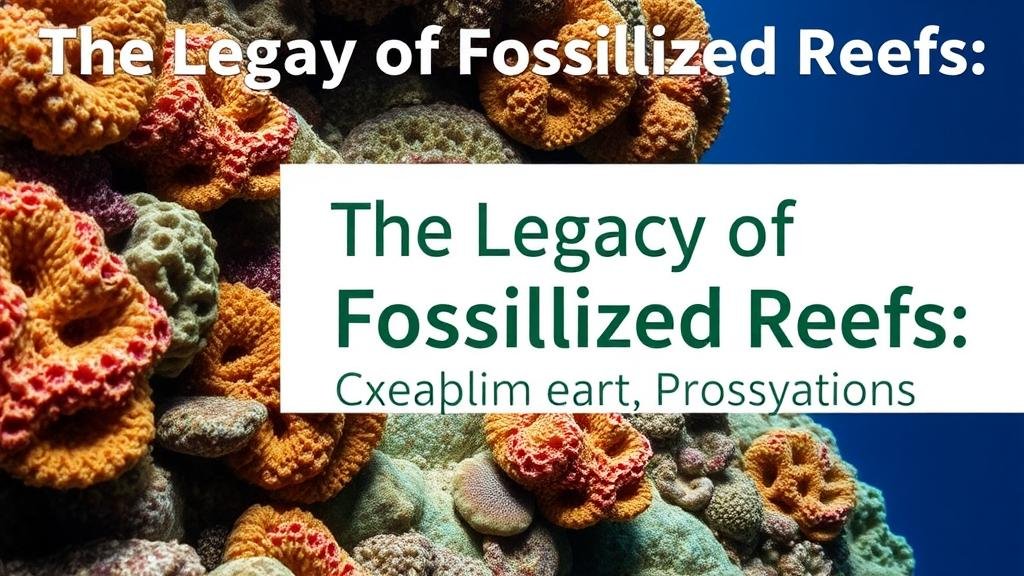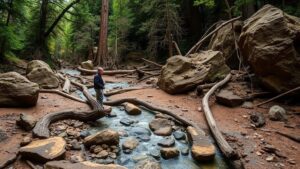The Legacy of Fossilized Reefs: Exploring Prehistoric Coral Ecosystems
The Legacy of Fossilized Reefs: Exploring Prehistoric Coral Ecosystems for Rockhounds and Mineral Collectors
The study of fossilized coral reefs offers a fascinating glimpse into prehistoric ecosystems that thrived millions of years ago. For rockhounds and mineral collectors, these remnants not only serve as beautiful additions to their collections but also provide valuable insights into the Earths geological history. This article delves into the formation, significance, and collecting of fossilized reefs, equipping enthusiasts with practical knowledge to explore this captivating aspect of paleontology.
The Formation of Fossilized Coral Reefs
Coral reefs are complex structures built primarily by the calcifying processes of coral polyps, tiny marine animals that secrete calcium carbonate. Over geological timescales, these reefs can transform into significant fossil beds as conditions lead to processes such as sedimentation and lithification. The fossilization process typically requires:
- Calcium carbonate deposition: Coral polyps secrete calcium carbonate to create their exoskeletons, and when they die, their remains accumulate and undergo diagenesis.
- Environmental stability: Reefs often form in shallow, warm, and photic zones of the ocean, where the conditions are optimal for coral growth and eventual fossilization.
- Time: Fossilization is a slow process, often taking thousands to millions of years.
One notable example is the Devonian coral reefs, which thrived approximately 419 to 359 million years ago. Fossils from this era have been discovered in various locations, including the famous formations in the western United States. e ancient ecosystems provide crucial information about marine biodiversity and climate conditions of their time.
The Importance of Prehistoric Coral Ecosystems
Fossilized coral reefs play a significant role in understanding our planets past. They act as indicators of historical climate conditions and oceanic environments. Here are a few key insights derived from studying these ancient ecosystems:
- Biodiversity hotspots: Fossil reefs reveal the types of species that existed, allowing scientists to track changes in marine biodiversity over time.
- Climate indicators: Coral growth patterns can correlate with ancient climatic shifts, offering data on temperature and sea level changes.
- Geological features: The structures of ancient reefs contribute to resource exploration (e.g., hydrocarbons and minerals) and help reconstruct past geological events.
Recent studies indicate that during periods like the Mesozoic, reef ecosystems flourished, hosting diverse marine life, including sponges, mollusks, and a variety of fish. e findings illustrate the correlation between reef development and periods of high biodiversity, shedding light on the role of reefs in global ecosystems.
Collecting Fossilized Coral: A Practical Guide for Rockhounds
For collectors, fossilized corals can be stunning additions to mineral collections, showcasing intricate patterns and unique forms. Here are some essential tips to guide you on your collecting journey:
- Research local sites: Identify areas known for fossilized coral. Popular locations in the U.S. include the Green River Formation in Wyoming and the Wilkes Formation in New Jersey.
- Understand the regulations: Always comply with local laws regarding fossil collection. Some areas may be protected, and collecting may require permits.
- Tools of the trade: Basic tools include a fossil hammer, chisels, safety goggles, and a sturdy backpack to carry your findings.
- Preservation techniques: Once you find fossil materials, clean them gently with a soft brush and store them in a climate-controlled environment to prevent damage.
Many collectors also engage with local fossil clubs or attend rock and mineral shows, networking with experienced individuals who can offer valuable insights and techniques for identifying quality specimens.
Conclusion: The Lasting Impact of Fossilized Reefs
The legacy of fossilized reefs extends far beyond their aesthetic appeal, serving as a critical record of Earths history. For rockhounds and mineral collectors, exploring these prehistoric coral ecosystems can ignite a passion for paleontology and a deeper understanding of marine evolution. By applying the tips provided and diving into the fascinating world of fossil collecting, enthusiasts can contribute to the preservation and appreciation of these vital geological treasures.
In summary, embarking on the quest to find and study fossilized reefs not only enriches a collectors repertoire but also enhances their knowledge of our planets rich geological narrative.


